Tillandsia roseoscapa
Click thumbnails for full size, scaled to a new window.
Tillandsia roseoscapa
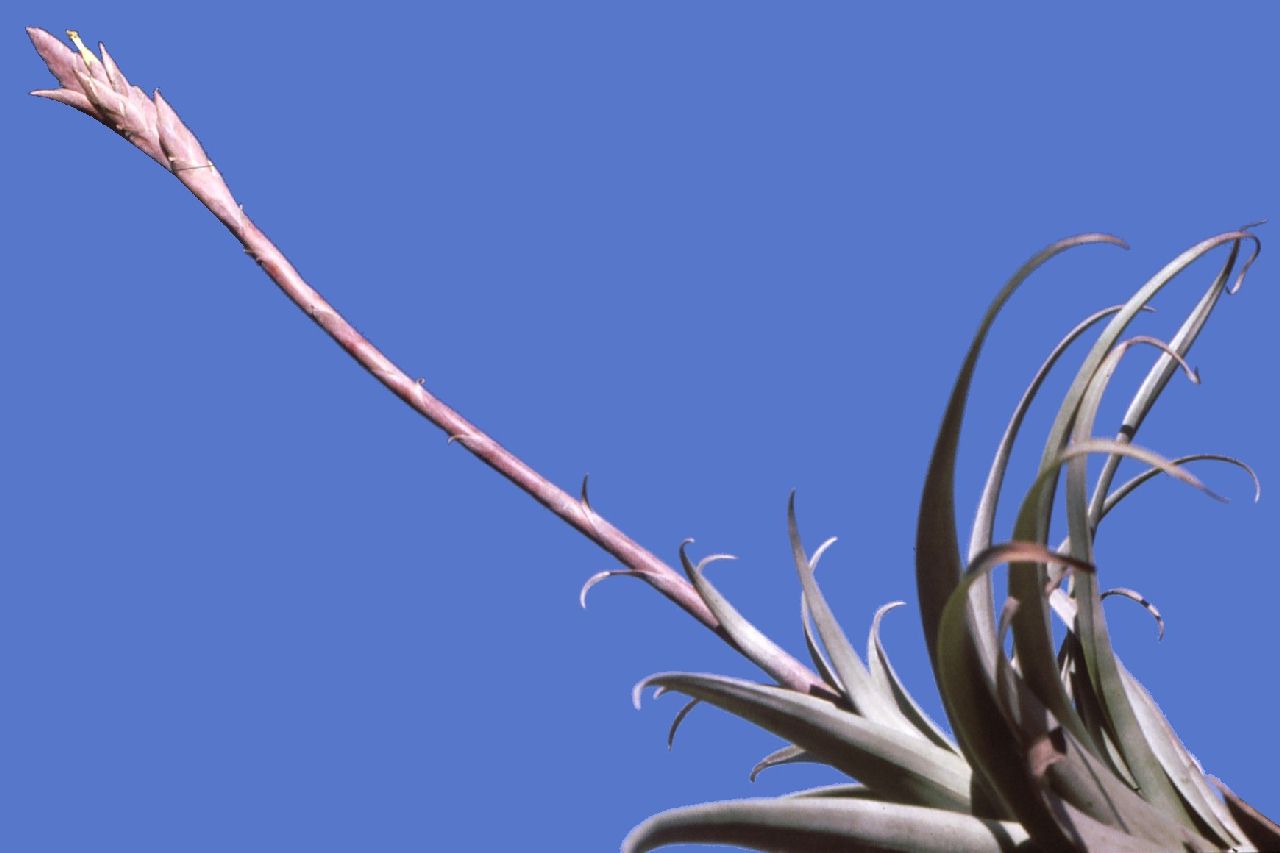


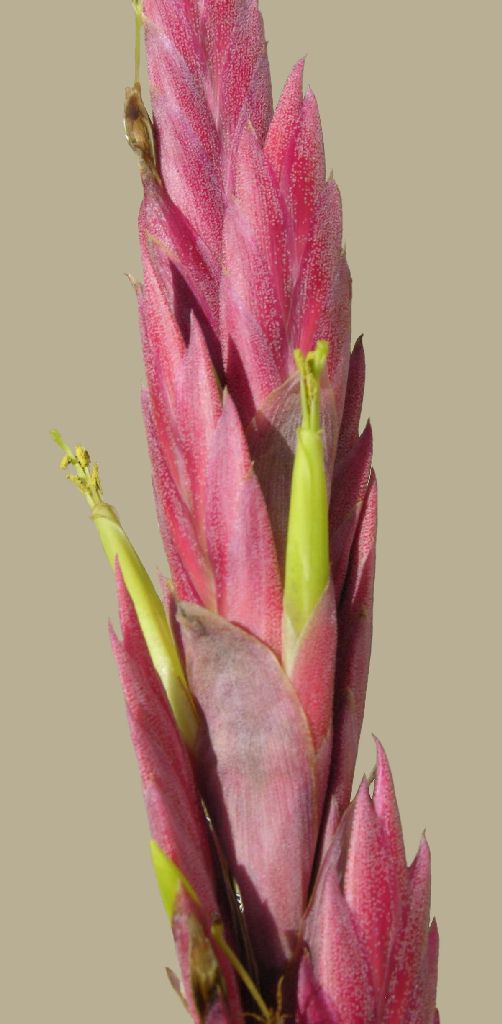
| Len Colgan 10/15 roseoscapa hybrid ? |
Len Colgan 10/15 roseoscapa |
Len Colgan ... "Way back in 1984, 31 years ago, I brought in a shipment of tillandsias from Werner Krauspe in California. It included a large plant labelled T. roseoscapa and another similar plant labelled T. acultzinea.
Not long afterwards, in 1987, the first of those flowered, appearing very similar to the species T. roseoscapa, as labelled. Please see scans of my old slides in the first two attachments. However, Derek and I were puzzled because the flower petals were not entirely yellow, as in the species description. The flowers all had purple bases, just visible in the images, which seemed to us a sure sign that what I had was a natural hybrid of T. roseoscapa and some other purple flowering species. Although the plant made an attempt at offsets, nothing survived.
In the meantime, what was the other plant labelled T. acultzinea, which was obviously yet another made-up name invented by Krauspe? Derek and I did discover there was a village in Mexico name Acultzingo, close to the natural habitat of T. roseoscapa. Hmm!
Well, 31 years after it was imported, it is now in flower. Actually, it was in spike in January when it was just small enough to fit into my car boot laying down to bring it to the society meeting. It has slowly expanded since then.
Please see the last two images which I just took this morning and cropped. As you can see, the flowers are completely yellow, and this is undoubtedly a very nice specimen of T. roseoscapa.
it is nice to know that I did actually get the species that I sought from Krauspe."
Peter Tristram ... "Hi Len, finally you have flowers! Hell of a long wait! All of WK Broms' 'acultzineas' sent to me when I was young bloomed close enough to roseoscapa, as we have discussed, but you never know, there might have been some purple hidden or almost hidden by the floral bracts. Mine all pupped so will be all over the place now. Evidently it hybridises in habitat too- it seems this is a common fact of brom evolution in Mexico."
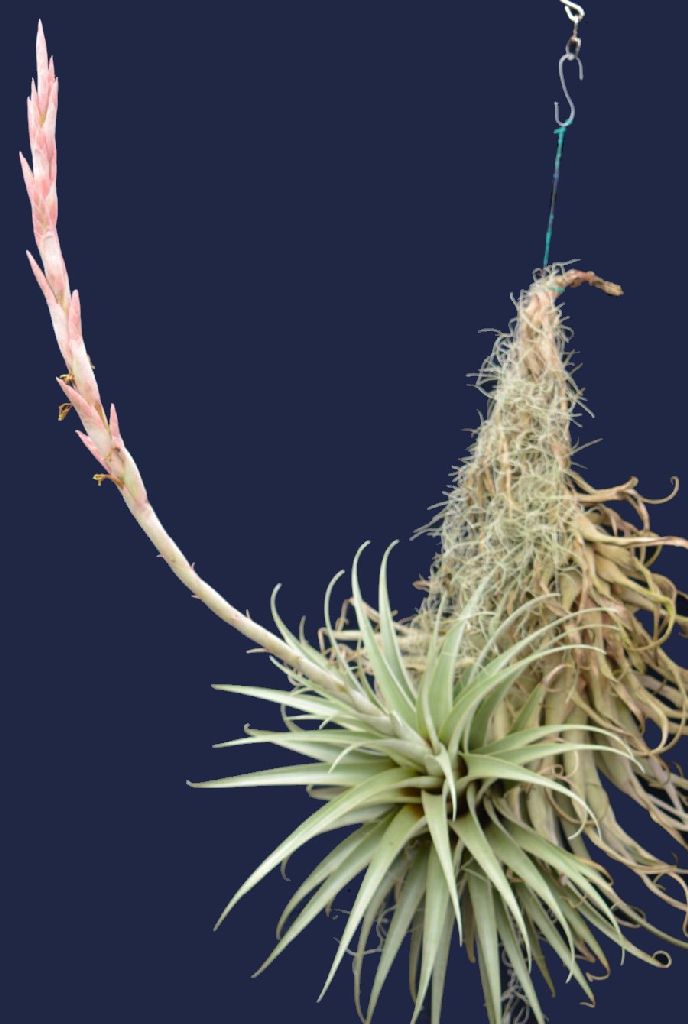
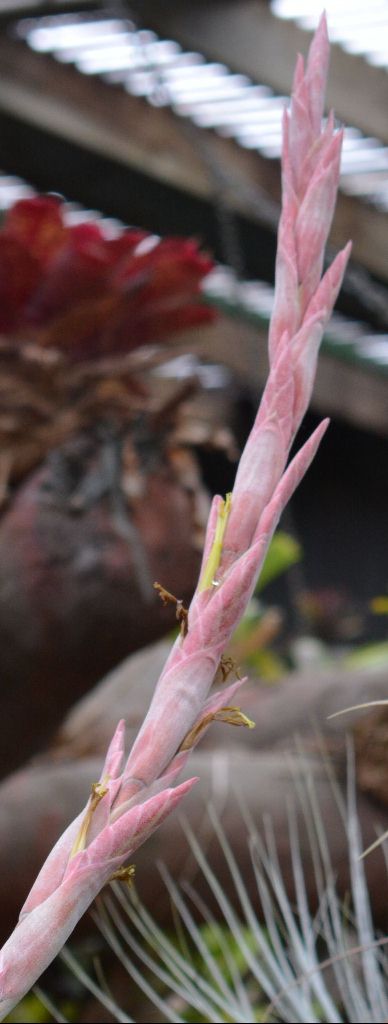
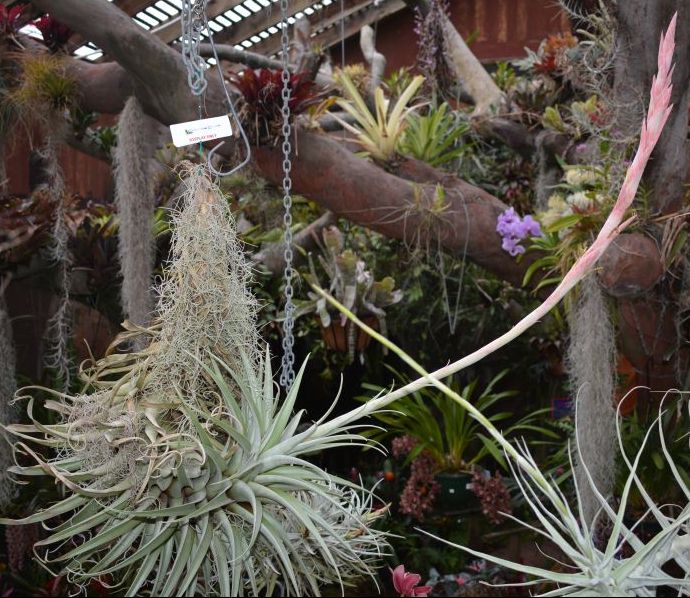
| Chris Larson 09/16. Very slow to flower for me. |
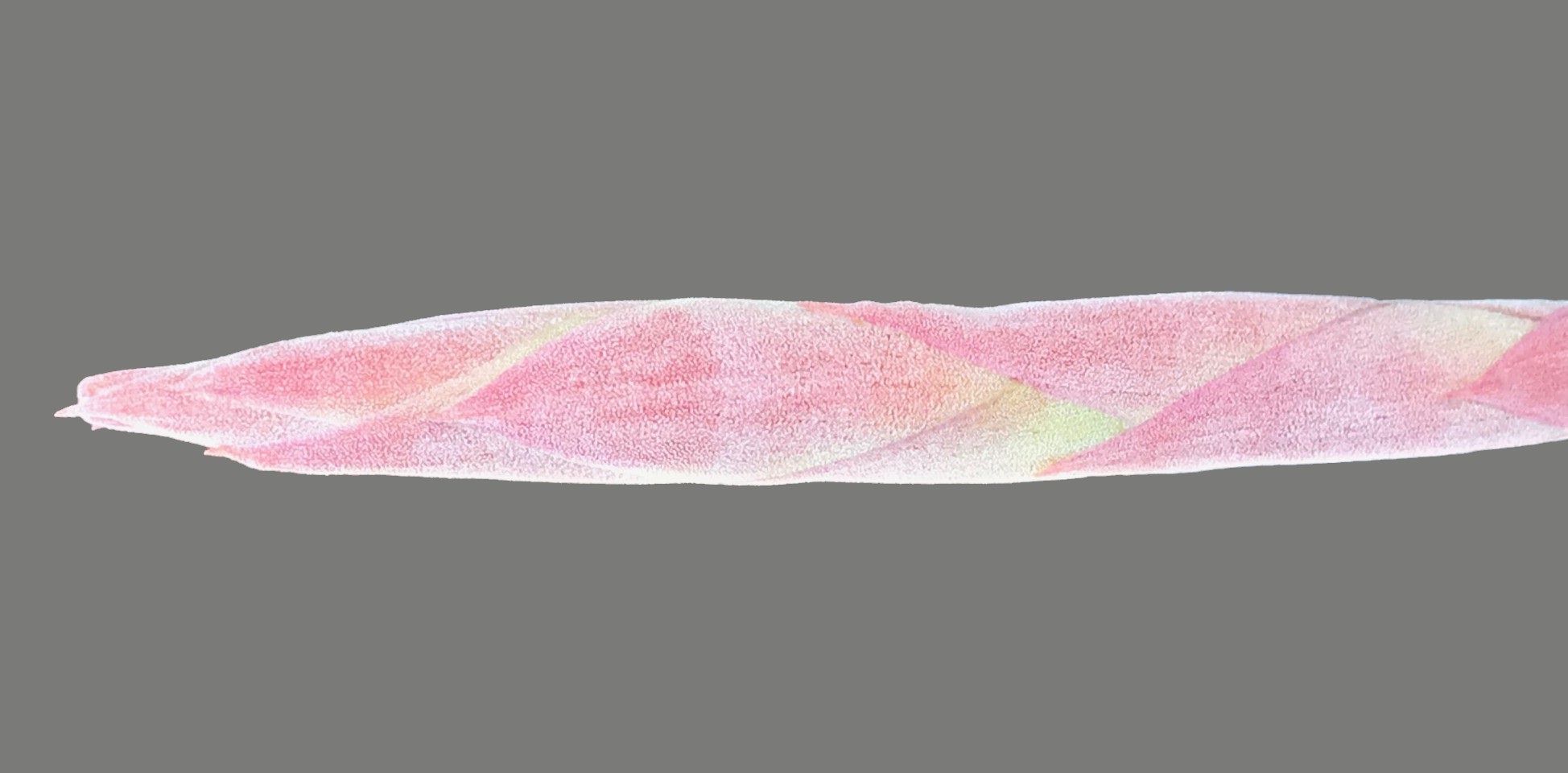
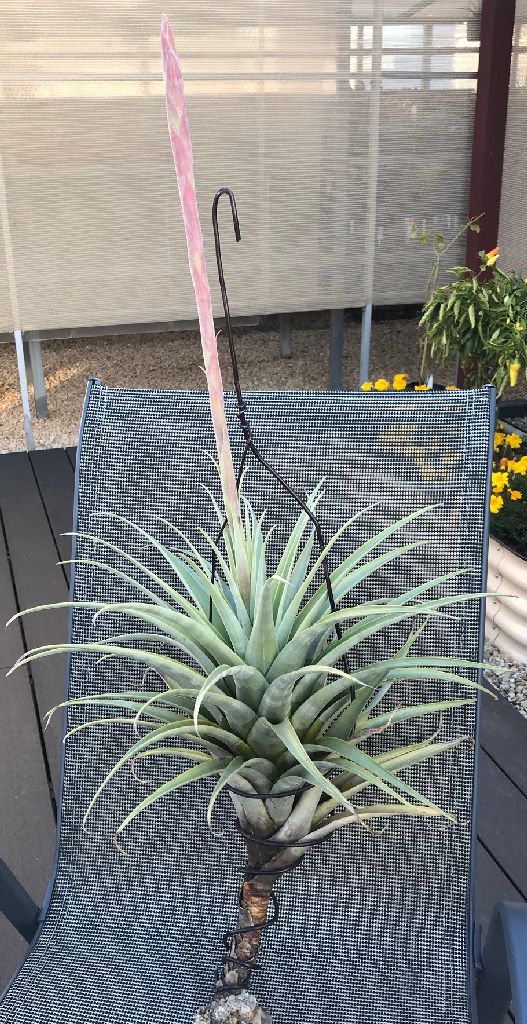
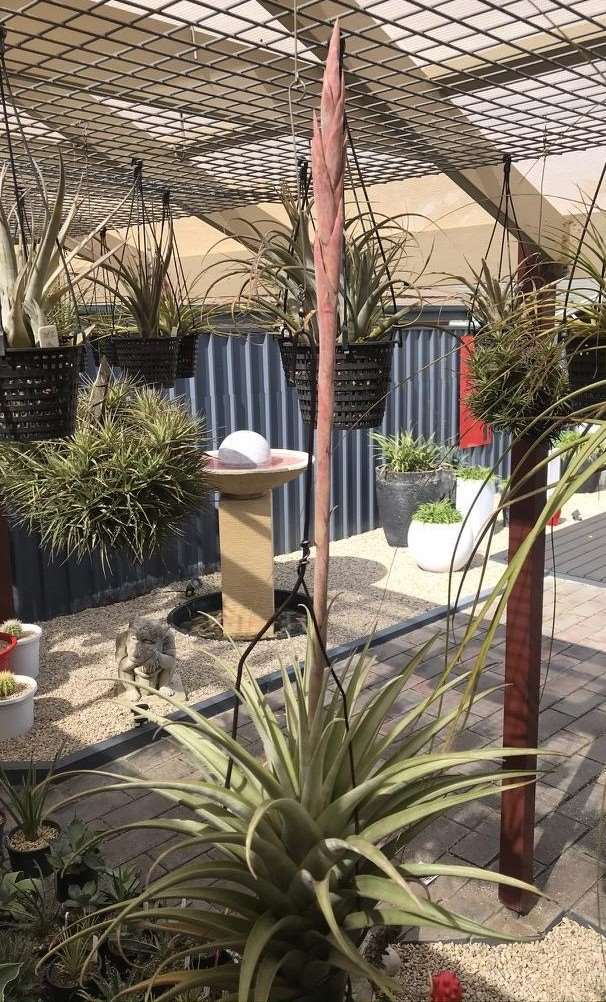
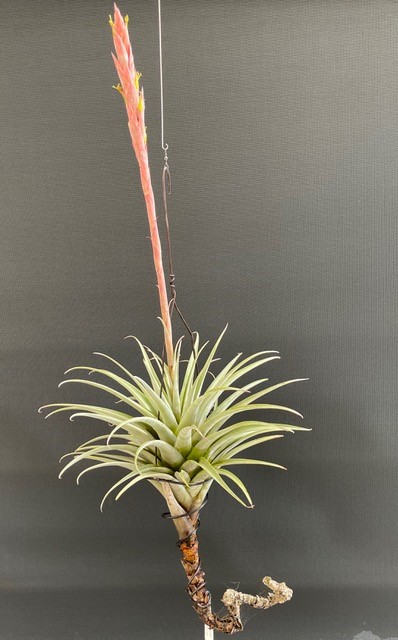
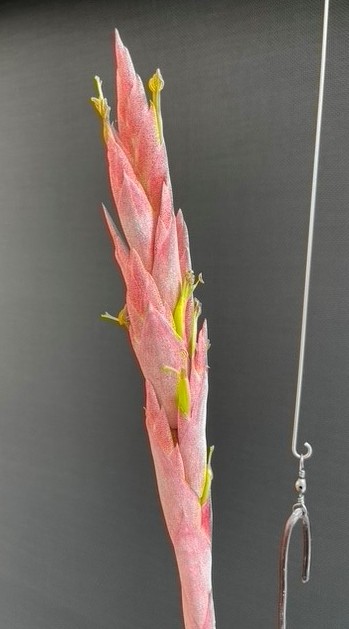
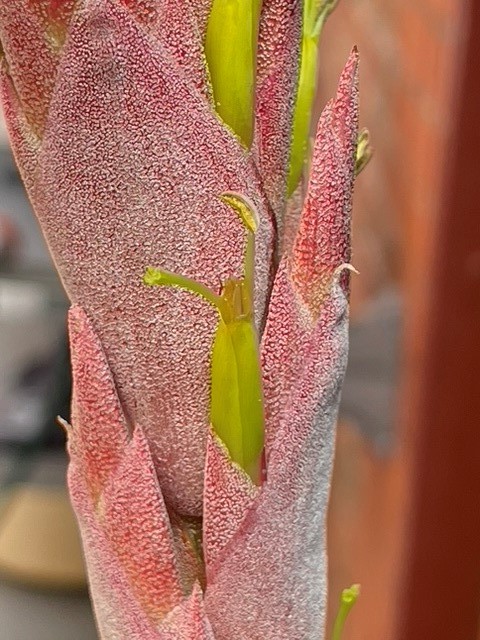 Ray Clark 11/20 ... "I posted pics of this plant some time ago and now we have actual flowers. For the record this plant also made an appearance in our BSSA Gazette (Vol.44 No.3) and was incorrectly named, (by me). I will be putting together a corrigenda."
Ray Clark 11/20 ... "I posted pics of this plant some time ago and now we have actual flowers. For the record this plant also made an appearance in our BSSA Gazette (Vol.44 No.3) and was incorrectly named, (by me). I will be putting together a corrigenda."
Peter Tristram ... "We used to import this as T. acultzinea until it was described, if you could get it. The trouble has always been that it rarely blooms, growing on long stems which need to be pruned (with a chainsaw lol) periodically. And itís big, so only a few take up the space of many smaller Tillandsia. It does pup, sometimes only one, sometimes quite a few, so I hope this healthy specimen gives a heap. The colour is so intense in drier climates too, with cooler nights. I also remember discussing flower colour as it can vary, even with some purple, though yours looks all yellow-green, Ray. Pam has done some nice hybrids using it too, so your turn, Ray!
Itís also another that goes translucent and dies outside here. I think Pam showed pics of it in habitat too, in a presentation and there are some in the DVD."
Tillandsia roseoscapa by D. Butcher in Bromeletter 4/1998, p7
This plant seems quite rare on the international scene but is fairly common in Australian collections, comparatively speaking. When Len Colgan put a query to users of the Internet he received one reply only and one note of encouragement.
Tillandsia roseoscapa was named in 1972 by Matuda but was not noted by Smith & Downs ( 1977). However. it does appear in Pamela Koide's Bird Rock catalogue in California.
A similar plant, T. roseospicata was named in 1975 by Matuda and is described in Smith & Downs but, as far as is known, is not held in any collection world-wide. The name has been bandied around in Australia but I believe this is because T. roseospicata is included in Smith & Downs while T. roseoscapa is not.
Access to the Mexican Cactus & Succulent Journals for 1972 and 1975, where the original descriptions were published, would be helpful but these are elusive in Australia. These descriptions would probably detail where Matuda originally collected T. roseoscapa. The published description may include a drawing or photograph of the original plant and this would be helpful also as I suspect there are problems with the description of this species.
This would not be the first problem with a description by Matuda. You may recall me jumping up and down about the description of T. beutelspacheri not matching the plants we had in Australia. Eventually Harry Luther amended the description in the BS.I Journal (1994). page 117
In 1984 Wulfinghoff brought a plant to Werner Rauh's attention. As a result of Werner's investigation Matudaís original description of T. roseoscapa was updated and published in the B.S.I. Journal (1986). pages 66-68. This article forms the basis of my investigations.
The one internet reply, apart from the encouragement, suggested that Len's plant was a hybrid. Len then asked me to CAREFULLY take his plant to bits.
Our plant differs from Rauh' s amendment as follows:
1 Plant is long-stemmed, not short-stemmed:
2 Floral bracts almost equalling sepals, not exceeding:
3 Sepals anterior free, posterior joined 5 mm, not high connate:
4 Petals citron at top 1.5 cm, mauve 1 cm. white 2 cm to base, not 4 cm long, pale yellow-green white at base:
5. Filaments and anthers exceed the flower tube not just the anthers;
6 Anthers have a mauve flush (colour absent from Rauh's description).
All in all, I think our plant is correctly named as T. roseoscapa but the 1 cm mauve section in the petal intrigues me as it did Len Colgan. This was the reason for his international S.O.S.
Certainly the hybrid Tillandsia ĎJack Staubí or the wild x rectifolia or the formula ionantha x schiedeana (call it what you will) does have bicoloured petals. The description says upper 2 cm cream or white, bottom 3 cm pinkish-violet to purple but sometimes you come across just a pinkish-violet band in the vicinity of the sepal which is visible at flowering. Here we have a known violet petalled flower crossed with a yellow or greenish-yellow petalled flower.
In the case of our T. roseoscapa, does the mauve section occur because of the stronger light here than in Germany? Is ours a 'one-off situation'?
Would the owners of T. roseoscapa carefully inspect and note the colours of the flowers of their plants when they next flower?
Updated 15/11/20









